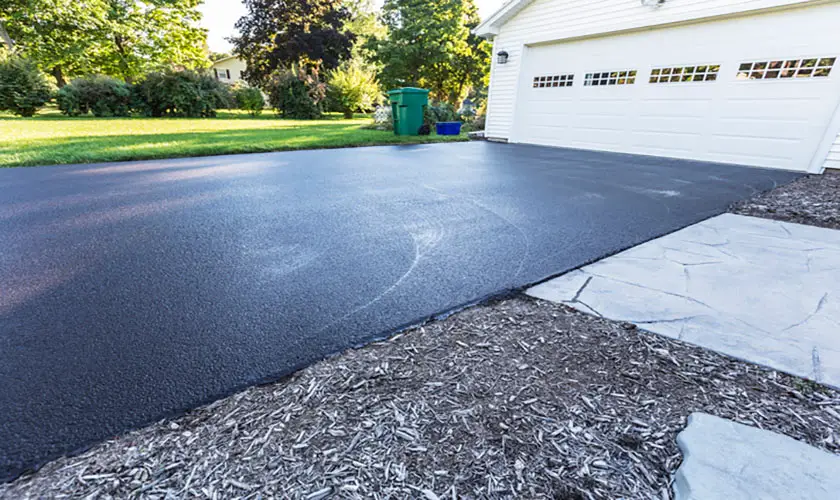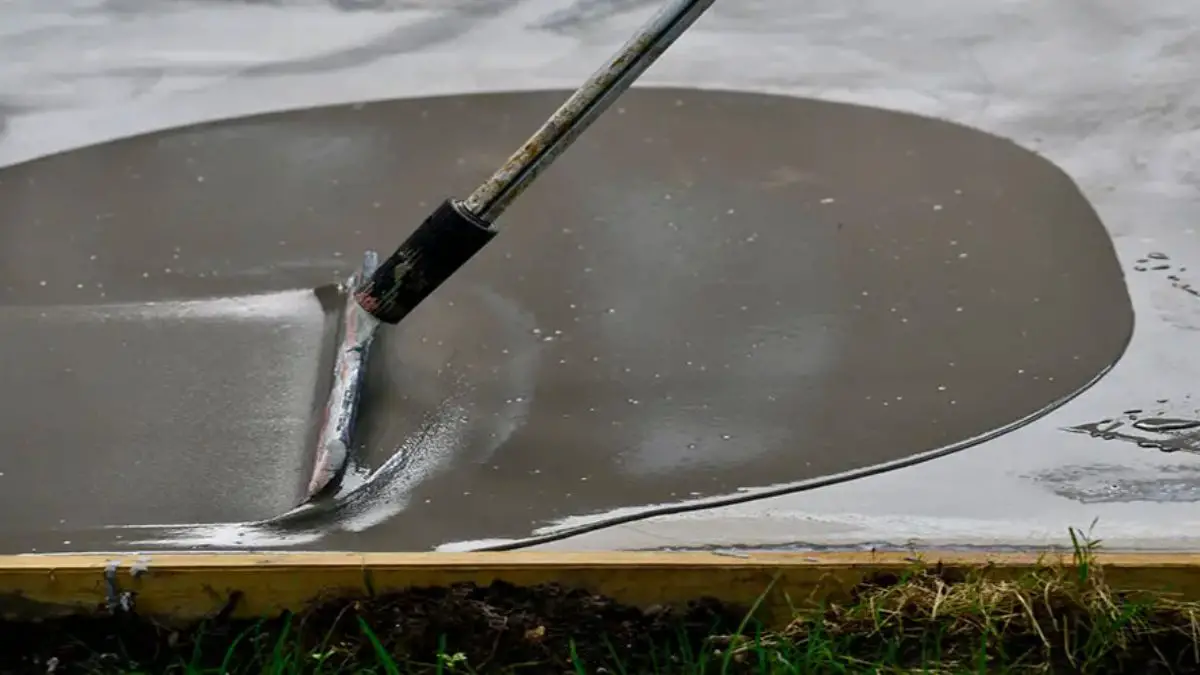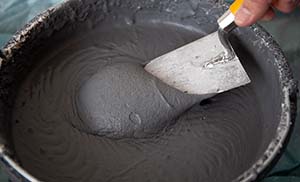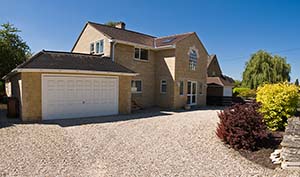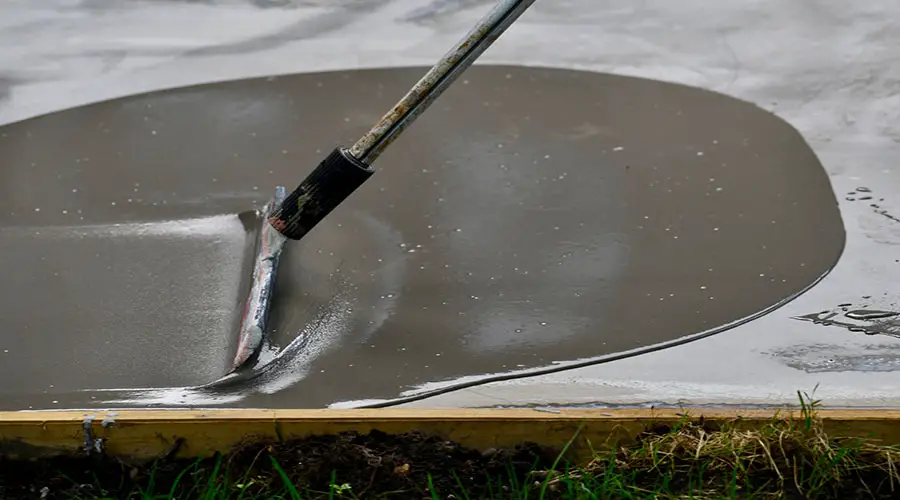
Concrete is one of the most durable and hardy materials when it comes to construction. But, concrete floors also have a drab grey look if left as the final finish. This is where concrete overlays come in to spice things up at an affordable price. Not only do they present a neat finish at a palatable cost, but they are also a concrete artist’s best friend when it comes to making your indoor or outdoor space look gorgeous. But will a concrete overlay crack?
A concrete overlay will not crack if you clean the substrate surface properly before installing the overlay. Also, if you do not lay the overlay too thick, it will last longer. Finally, you can keep your concrete overlay from cracking by waterproofing the substrate floor to prevent moisture vapors.
In this post, we take an in-depth look at preventing concrete overlays from cracking and how long these overlays can last.
What Is A Concrete Overlay?
Concrete overlay is a cement-based product that comprises color, aggregate, cement powder, and resin mixed in a formulation. It is applied over your existing concrete.
While concrete is incredibly durable, it is also prone to wear and tear that will manifest as cracks, chipping, and even stains over time. Plain grey concrete is functional but may not present the best-finished look for your home, office, or business establishment.
Overlays are often one of the best solutions to repairing a worn-out floor as well as finishing. They add different shades of color and textures that change your space’s aesthetic feel and look.
Do Concrete Overlays Last?
Most customers looking for their money’s worth in finishing a concrete floor with style find concrete overlay options to be a great solution.
In addition to adding color and style to concrete, overlays are remarkably durable when done correctly. They can last for decades provided guidelines are followed to the tee when prepping the substrate.
One of the most frequently asked questions by customers considering concrete overlay is whether they will crack and after how long?
When thinking of doing a concrete overlay, you must understand that its durability and appearance of cracks solely depend on whether you did repairs to the concrete floor correctly.
Cracks that occur on an overlay are a result of an underlying problem on the concrete floor.
That’s why, if there’s any concrete floor issue that is not addressed when doing repairs, it will manifest as a crack on the overlay soon.
Conversely, if all repairs and corrective issues on the substrate are adequately addressed, the concrete overlay will not experience any cracks for many years to come.
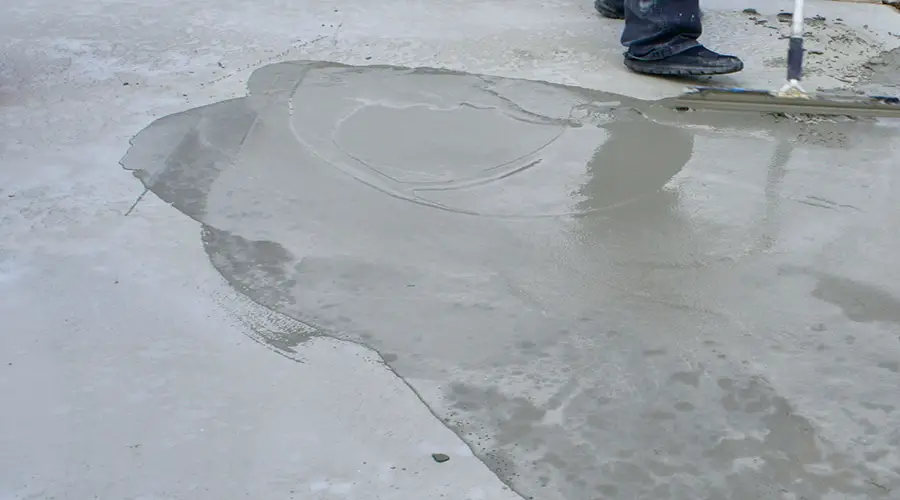
Tips To Consider That Help Prevent Cracks On Your Overlay
Resurfacing and overlaying your concrete involves several essential steps.
Whether you are doing it yourself or have hired a professional to do it for you, how durable the outcome will depend on several necessary steps that you must adhere to.
What To Do
Assess your concrete surface to determine what repairs you need to undertake first.
If your surface does not have significant damage, the following steps should suffice for substrate prepping:
- Cleaning (sweeping)
- Repair Fixing gaps and patches)
- Priming
- Pressure washing
- Power washing
- Conduct stability and soundness check
If there is significant damage, you may need to get a professional’s help.
Repairs may involve using rubberized fillers for the cracks. Surface-up bits on the floor will need to be removed to help level the surface.
Dust, dirt, and grime are washed clean from the surface using pressure washing.
So why do you need power washing as well? Power washing ensures that stubborn stains which the pressure wash could not get rid of are taken care of. Power washing using hot water will successfully remove even oil-based stains.
In the case of sagging slabs and cracks, your concrete technician will employ a repair technique known as mud jacking to level the surface. This entails pumping concrete into the cracks and under those sagging areas of a slab to make the surface level.
Failure to address these sorts of repair issues in the substrate during the prepping stage will be the reason for cracks that show up on your overlay.
Choosing the right quality of concrete overlay also plays a part in keeping cracks from occurring.
Engaging a professional in assessing your concrete surface is highly recommended. That is a sure way of seeing that repairs are dealt with professionally and to the highest standards.
A concrete overlay professional will also advise on the best overlay blend products based on the condition of your floor and the aesthetic outcome that you are hoping for.
How Thick Should Concrete Overlay Be?
| Type of Concrete Overlay | Thickness |
|---|---|
| Microtopping | 1/8″ |
| Stampable Overlay | 3/4″ |
| Spray-down Overlay | 1/8″ |
| Self-leveling Overlay | 1/5″ |
The typical acceptable thickness for many contractors is between ¼ to 2 inches thick. Technically concrete overlays can be as thin or as thick as you want. However, the best thickness to work with may depend on which type of overlay you choose to work with.
4 types of standard concrete overlays and their recommended thickness:
1. Microtopping
As the name suggests, this type of overlay is thin. Most contractors and clients, who opt for this overlay type, tend to use it with a 1/8″ thickness.
Microtopping can be presented with a smooth or a textured finish based on decor preference.
Micro-topping refinishes are a viable option when you want to minimize cost yet still get great value when restoring a concrete floor for. They lay thinly on the surface and can even be applied to kitchen tabletops and counters.
A micro-topping overlay’s ability to refurbish a cracked chipped or plain surface leaves a
professional finish. While at it, your concrete overlay artist can use their creative skills to mimic items such as tile or stone for an exquisite look
2. Stampable Overlay
Stamped overlay types are versatile as you can use them both indoors and outdoors.
This type of overlay works very well for creating striking decorative textures on your concrete surface. A stamped overlay does an excellent job of bringing out a wood, slate, brick, stone, or tiled look to mimic the real materials.
The recommended thickness or depth for a stampable overlay is a ¾” spread. That depth allows a variety of deep pattern imprints to sit nicely on the spread.
A stamped overlay offers a range of colors and aesthetics from powder release, broadcast pigment, tinted sealers, as well as stains and dyes.
3. Spray-Down Overlay
Spray-down overlay works well with a depth of ⅛”. You can opt to get a pre-colored mix or put your creativity to the test with varied finishing options such as knock-down and splatter for unique and beautiful outcomes.
During the mixing process, you can also work with dyes, tints, and stains. This overlay is considered to have the most creative leeway when compared to all the other overlay options.
The spray-down overlay is excellent if you want to have a slip-resistant surface for your pool, driveway, or sidewalk.
4. Self-Leveling Overlay
The recommended depth for the self-leveling overlay spread is ⅕”.
Self-leveling overlays are easily spread with the minimal use of a metal squeegee. However, this overlay is quite unpredictable and leaves very little room for error.
You will need to be fast because the working window is concise. The mixing process has to be accurate to achieve the best outcome.
If you use too much liquid, you more than likely will experience cracks. On the other hand, if you use too little liquid in the mixture, the formulation will not flow or set as needed. The mix has to be exactly as prescribed by the manufacturer.
Are Concrete Overlays Good?
Concrete overlays are a good solution for 2 main reasons: they help fix underlying surface problems and provide aesthetic value.
For concrete floors that require repair, a concrete overlay means addressing the repairs on the substrate and topping it with a cement-based coat that does the following;
- Correct surface deficiencies
- Improves surface drainage
- Slows down surface deterioration caused by climate
- Adds to the structural capacity of the floor or wall
- Improves on safety against skidding
While there are many other materials to repair a concrete surface, there’s probably none that can cut cost and yet deliver aesthetic value than a concrete overlay.
In respect to adding aesthetic beauty to concrete surfaces, overlays are a great decorative option because of the following;
- They can create gorgeous textured surfaces
- They can improve smoothness where required
- Comes in a myriad of colors, patterns, and motifs that deliver beautiful finishes
- Provide creative artistic elements with color and geometric shapes
If you have a concrete floor or wall that is looking drab and in need of repair, the concrete overlay could be the solution that will solve your problems. Overlays will kill two birds with one stone. Repair your concrete surface and give it an enviable aesthetic appeal.
Concrete overlays are also an excellent option for remodels. This is because of the creative opportunities they offer to a concrete artist. In some cases, where cracks are complicated or costly to repair, overlays can be used creatively on the gaps with other patterns to form part of the design.
With a few modifications, random cracks can be filled and integrated into the overall design, hiding them in plain sight while delivering an artistic look.
How Strong Is The Concrete Overlay?
Concrete work will typically have a tensile strength of about 3000 psi.
If one were to rip concrete apart, that’s about the pressure that it would break at. That measurement helps us put the strength of concrete overlays into perspective.
With the addition of Polyurethane Epoxy cement to the mix, the strength of an overlay product is significant.
Considering that resin is an ingredient in overlay products that brings about 8500 psi of tensile strength to the mix single-handedly.
The inclusion of other ingredients such as aggregates and powdered cement gives the overlay a tensile strength that is slightly shy of 10,000 psi.
Most customers underestimate the strength of overlays. Modern concrete overlays are made of the ingredients mentioned above and are incredibly strong.
Strong as they are, it is essential to remember that overlays are as good as the surface that the contractor will apply them to. Should they crack, it is not because they have a weak constitution. It is often because the substrate underneath was not repaired properly.
As we mentioned earlier, when the substrate is well repaired, you can expect the overlay to last for many years to come without developing any cracks.
Conclusion
Any person with a decent level of experience in using concrete overlay or background in construction and mixes can pull off a do-it-yourself concrete overlay project.
However, given the involved process and technicalities of the surface conditions and choosing the correct concrete overlay for the best outcome, it makes better sense to have a professional do the project for you.
A contractor can guide you through various overlay options and their pros as well as cons.
They are best placed to point you towards long-lasting, high-quality products that have been tried and proven, as well as discuss and evaluate color and aesthetic options that will best suit the need of your space.
But if you are an avid DIYer, laying a concrete overlay is not difficult. Just make sure that you follow the instructions provided by the manufacturer depending on the overlay you are working with.
Sources


